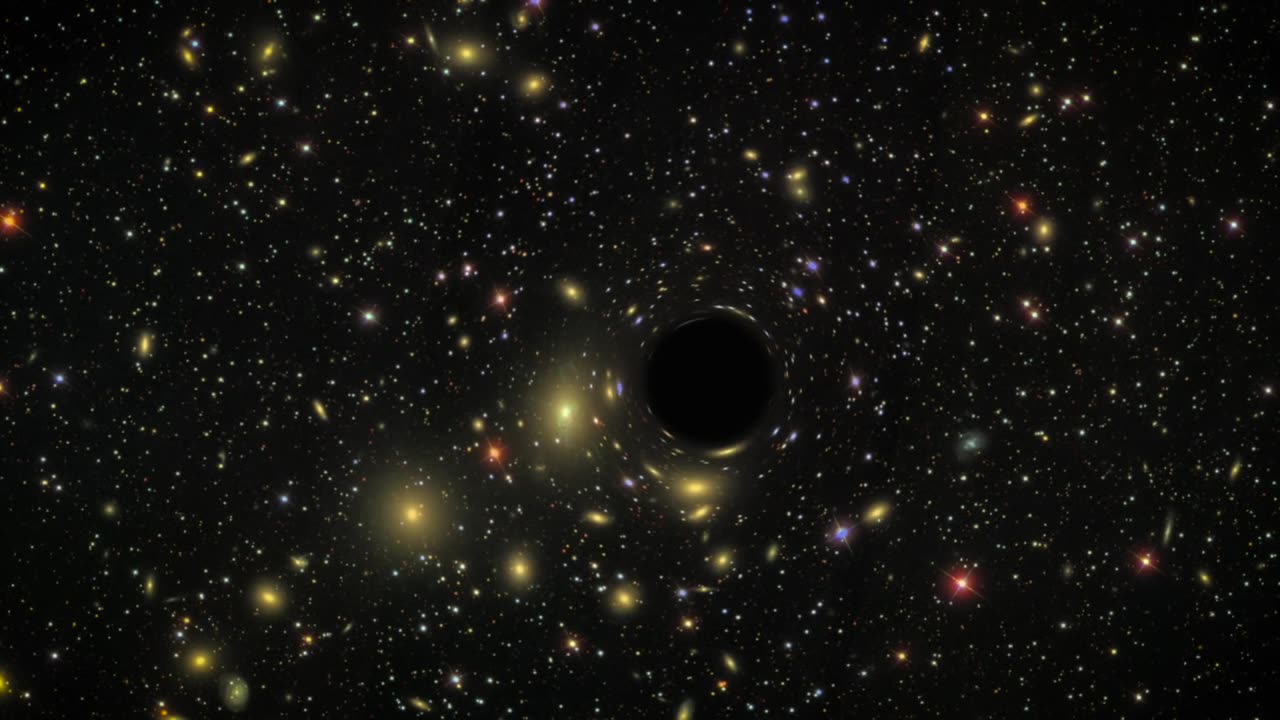Premium Only Content

X-ray Echoes Map a Black Hole’s Disk
Roughly 3.9 billion years ago, at the core of a distant galaxy, a massive black hole tore apart a star that had ventured too close due to its gravitational pull. The resulting X-rays reached Earth on March 28, 2011, and were detected by NASA's Swift satellite. Scientists swiftly recognized this event, now named Swift J1644+57, as signifying both the destruction of the star due to tidal forces and the sudden activation of a previously dormant black hole.
By utilizing archived data from Swift, the European Space Agency's XMM-Newton observatory, and Japan's Suzaku satellite, a team led by Erin Kara, a researcher at NASA's Goddard Space Flight Center and the University of Maryland, identified the reflections of X-ray bursts during this event. These echoes, referred to as light reverberations, have enabled the mapping of gas movements near the newly awakened black hole, marking a pioneering accomplishment.
Among only three instances of tidal disruptions emitting high-energy X-rays, Swift J1644+57 is the sole case observed during the peak of such emission. The subsequent detection of their echoes minutes later as their light interacts with structures in the developing accretion disk provides valuable insight, a technique known as X-ray reverberation mapping. While this method has been previously employed to study stable disks around black holes, it's now being applied to a newly formed disk resulting from a tidal disruption.
The accretion disk of Swift J1644+57 was found to be thicker, more turbulent, and chaotic compared to stable disks that have had time to settle into a predictable pattern. A surprising outcome is that the source of high-energy X-rays originates in the innermost parts of the disk, rather than a narrow stream of accelerated particles as initially hypothesized.
The research team estimates that the black hole has a mass approximately one million times that of the sun. They anticipate that advancements in understanding and modeling accretion processes will eventually enable the measurement of the black hole's spin using this gathered data.
-
 25:41
25:41
SB Mowing
19 hours agoPICTURE living next to THIS and not knowing what to do…
132K73 -
 2:16:01
2:16:01
George Galloway
1 day agoNEW YEAR COUNTDOWN - MOATS with George Galloway - EP 408
134K243 -
 18:39
18:39
Stephen Gardner
15 hours ago🔥BREAKING! Trump's SHOCKING New Demand | Biden admits DOJ TARGETED Trump Illegally!
104K456 -
 1:20:23
1:20:23
Josh Pate's College Football Show
20 hours ago $15.60 earnedCFP Prediction Special: OhioSt vs Oregon | UGA vs Notre Dame | Texas vs ASU | Boise vs PennSt
127K6 -
 7:50:03
7:50:03
Scottish Viking Gaming
19 hours ago💚Rumble :|: SUNDAY FUNDAY :|: Virginia has two Verginers, Change my Mind!
131K18 -
 1:49:50
1:49:50
Winston Marshall
2 days agoThe DARK Reality of Socialism - Historian Giles Udy
101K128 -
 1:09:28
1:09:28
Sports Wars
17 hours agoBengals STAY ALIVE In OT Thriller, ESPN's Ryan Clark SLAMMED, NFL DESTROYS NBA On Christmas
85.2K19 -
 9:37
9:37
EvenOut
1 day ago $5.62 earnedThe Non-Reflecting Mirror Scare Twin Prank!
72.6K5 -
 11:19
11:19
Tundra Tactical
1 day ago $7.23 earnedI Saw How CMMG Makes Guns.
77.7K8 -
 15:34
15:34
Misha Petrov
1 day agoReacting To TikTok’s Most DELUSIONAL Takes!
88.2K81